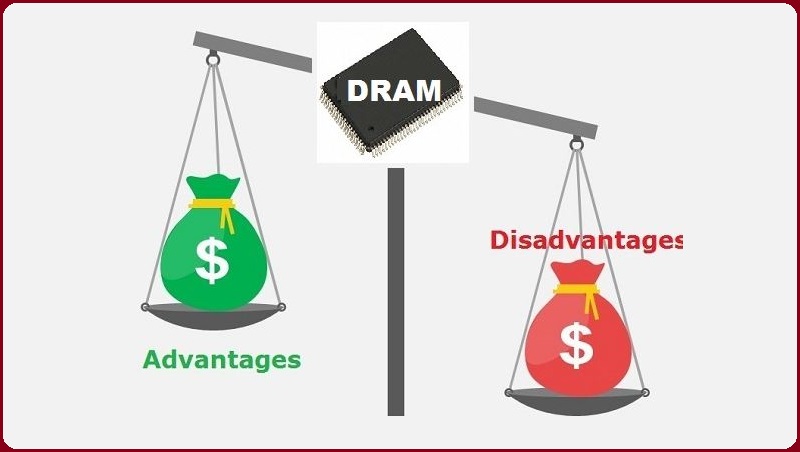DRAM (Dynamic Random Access Memory) is a simple type of semiconductor memory that designed specially to store data or program files which are needed by computer processors for performing their functions.

Capacitor represents two possible values like as 0 and 1 that can be hold in a bit, and these values mark as charging and discharging.
Advantages of DRAM (Dynamic)
Here, we will spread light on the several characteristics and benefits of dynamic RAM for main memory.
- Dynamic Random Access Memory design get implement with simple technique because in which use single transistor.
- It allows the great integration density levels.
- It is able to store massive data.
- It is capable to refresh and delete itself while processing.
- Cost effective
- DRAM has good reliability
- It is Smaller size
- It has higher dense
- It has simple structure compare to SRAM
- Less power consumption
- It needs small area
- Low cost per bit
Disadvantages of DRAM (Dynamic)
There are several limitations of DRAM, such as:
- Its accessing speed is very slow compare to SRAM.
- All data discarded due to power is OFF because it is Volatile memory.
- It consumes more power to SRAM.
- Data needs to refreshment continuously.
- It has complex manufacturing process.
- Decrease the memory density
- Less storage capacity to Static RAM
- It has slow operation speed.
Applications and Uses of DRAM
Due to cost efficient storage of DRAM that used in several areas such as:
- Using in different batteries for synchronous and asynchronous applications.
- Personal Computers, Laptops, PDA and more.
- Digital electronics equipment
- Enhance of graphics functions of PCs.
- Networking Architecture
- Workstations and Servers
In DRAM, several capacitors use for storing every bit of data. This is very simple path to save data in its memory because it needs small area to store same data to SRAM as well as it is capable to store massive data than to SRAM but it requires the frequently refreshing of its circuit for its charging, so it consumes more power compare to Static RAM.
Also Read: SRAM Circuit Design and Operation (Read-Write)
DRAM firstly introduced and patented by Robert Dennard in 1968, and then it released by Intel in October, 1970.
DRAM is capable to store more data compare to SRAM as well as it is cheaper than SRAM. Dynamic RAM is most commonly using in the personal computer systems and workstations.



